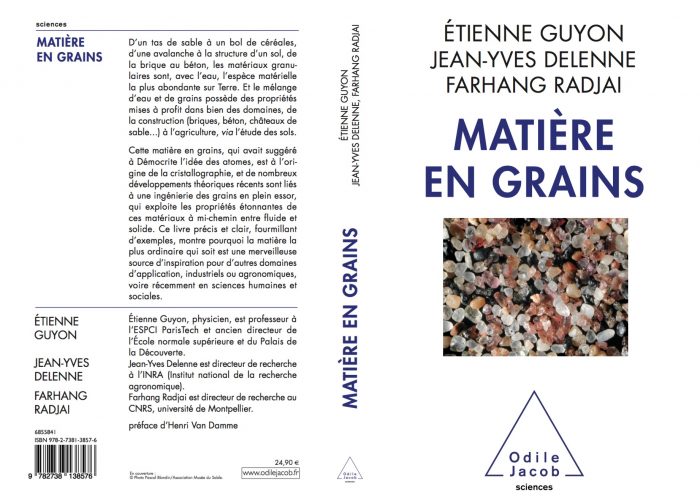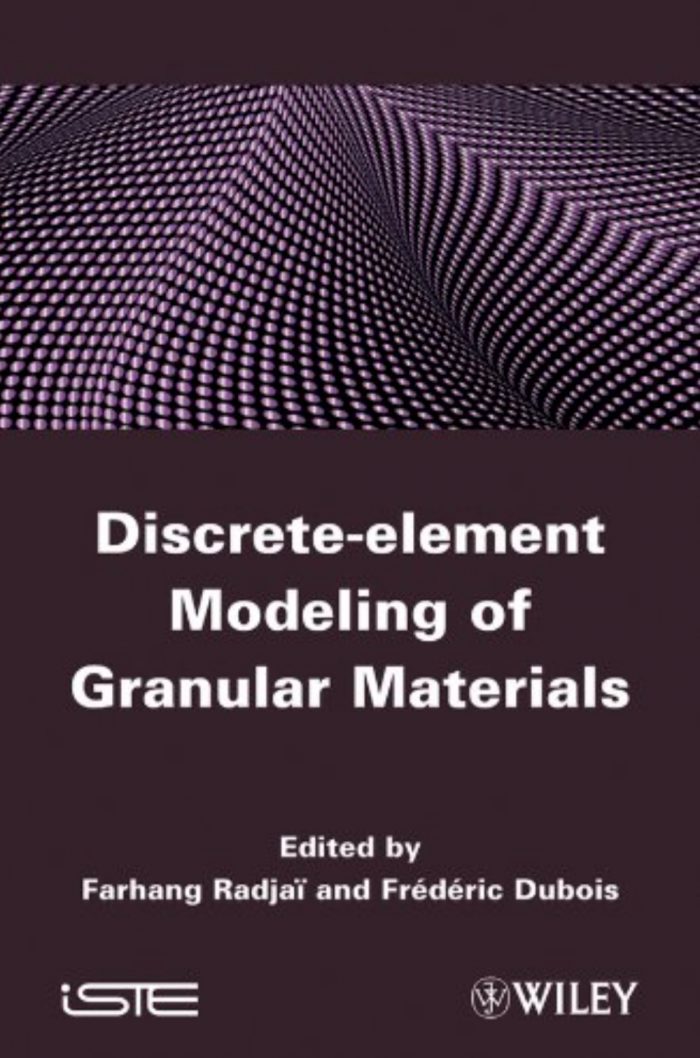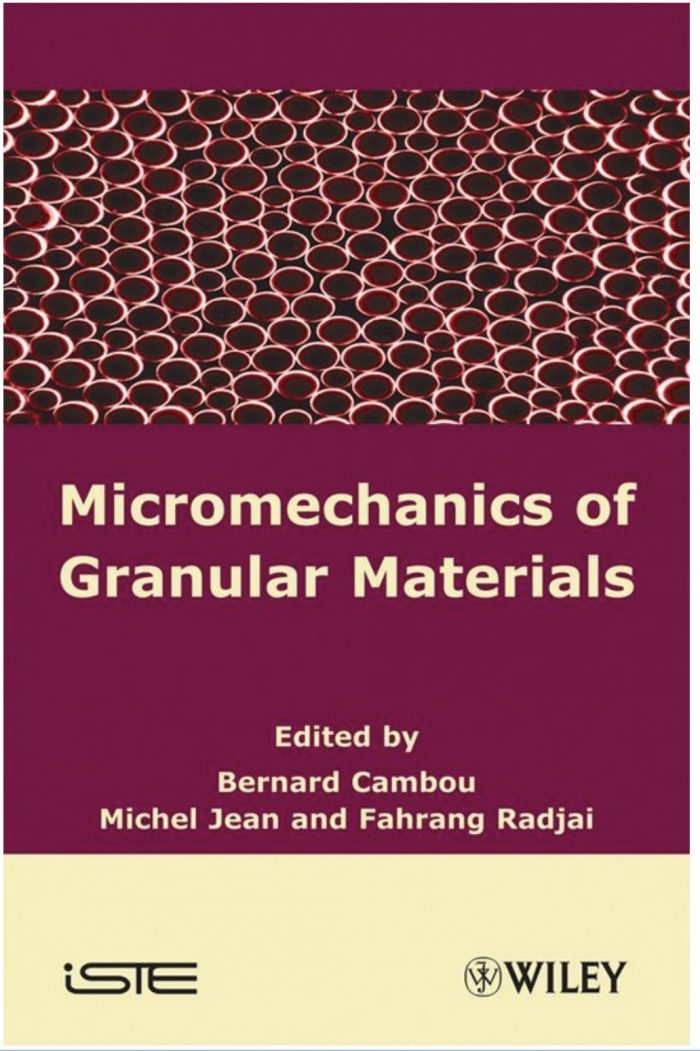Powders and Grains 2017 (396 reviewed chapters)
Farhang Radjai, Saeid Nezamabadi, Stefan Luding and Jean-Yves Delenne
Published online: 30 June 2017.

Matière en Grains (in French)

- Broché : 331 pages
- Editeur : Odile Jacob (3 mai 2017)
- Collection : OJ.SCIENCES
- ISBN-10 : 2738138578
- ISBN-13 : 978-2738138576
Grains et graines, façonnés, usés, cassés, collés ; l’homme et la nature les utilisent pour se nourrir, bâtir ou formuler de nouveaux matériaux. Le sable et la farine forment des tas ; le sel s’écoule ou se bloque dans la salière ; les grains du château de sable sont liés par de l’eau. Ces observations sont si familières que l’on en a longtemps négligé la portée. D’abord source de métaphores, tel l’atome de Démocrite, la matière en grains fait actuellement l’objet de nombreuses recherches scientifiques exploitant des propriétés étonnantes, à mi-chemin entre fluide et solide. On comprend dans ce livre précis et clair, fourmillant d’exemples, pourquoi la matière la plus ordinaire qui soit est une merveilleuse source d’inspiration pour des domaines d’application aussi variés que l’agronomie, les sciences de l’environnement, les matériaux de construction, le génie des procédés, et jusqu’aux sciences humaines et sociales.

Discrete-Element Modeling of Granular Materials

ISBN-139781848212602
Format: Hardback,
Publisher: ISTE Ltd and John Wiley & Sons Inc
Publication date: 8 mars 2011
Pages: 496
This book brings together in a single volume various methods and skills for particle-scale or discrete-element numerical simulation of granular media. It covers a broad range of topics from basic concepts and methods towards more advanced aspects and technical details applicable to the current research on granular materials. Discrete-element simulations of granular materials are based on four basic models (molecular dynamics, contact dynamics, quasi-static and event driven) dealing with frictional contact interactions and integration schemes for the equations of dynamics. These models are presented in the first chapters of the book, followed by various methods for sample preparation and monitoring of boundary conditions, as well as dimensionless control parameters. Granular materials encountered in real life involve a variety of compositions (particle shapes and size distributions) and interactions (cohesive, hydrodynamic, thermal) that have been extensively covered by several chapters. The book ends with two applications in the field of geomaterials.

Micromechanics of Granular Materials

Nearly all solids are compised of grains. However most studies treat materials as a continious solid. The book applies analysis used on loose granular materials to dense grainular materials. This title s main focus is devoted to static or dynamic loadings applied to dense materials, although rapid flows and widely dispersed media are also mentioned briefly. Three essential areas are covered: Local variable analysis: Contact forces, displacements and rotations, orientation of contacting particles and fabric tensors are all examples of local variables. Their statistical distributions, such as spatial distribution and possible localization, are analyzed, taking into account experimental results or numerical simulations. Change of scales procedures: Also known as homogenization techniques , these procedures make it possible to construct continuum laws to be used in a continuum mechanics approach or performing smaller scale analyses. Numerical modeling: Several methods designed to calculate approximate solutions of dynamical equations together with unilateral contact and frictional laws are presented, including molecular dynamics, the distinct element method and non–smooth contact dynamics. Numerical examples are given and the quality of numerical approximations is discussed.
- Pages : 362
- Publisher : ISTE Ltd. (8 mai 2009)
- ISBN-10 : 1848210752
- ISBN-13 : 978-1848210752
